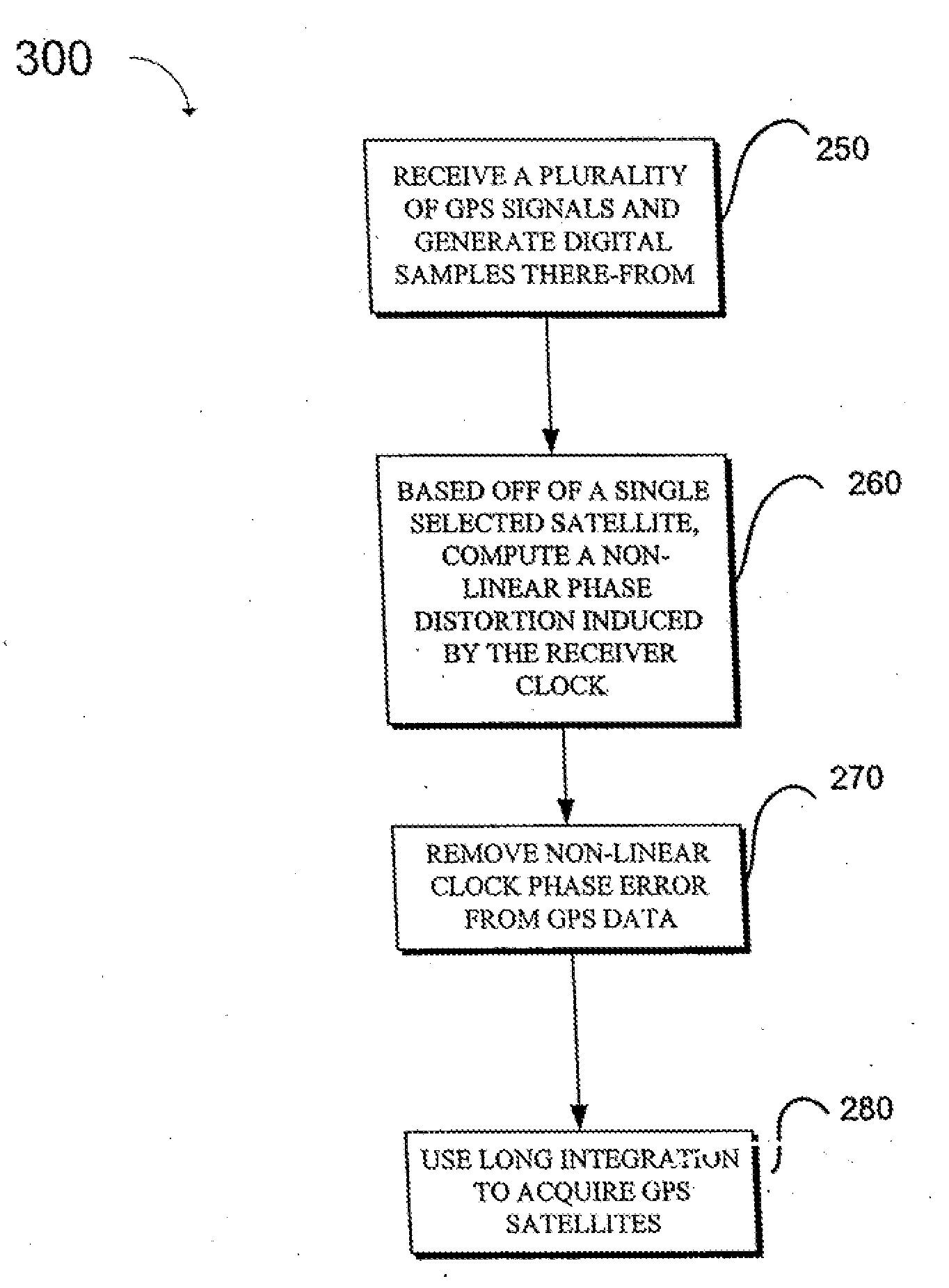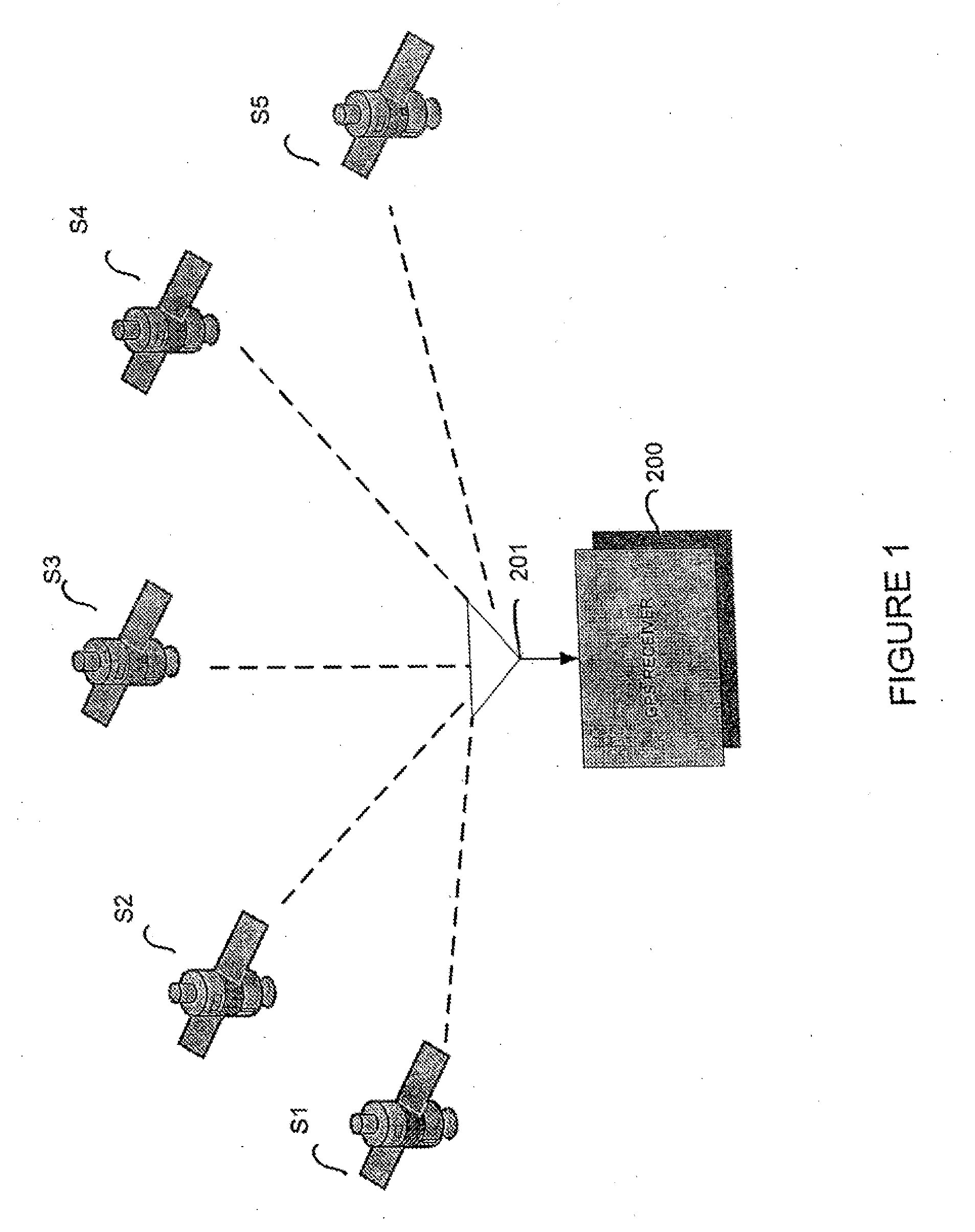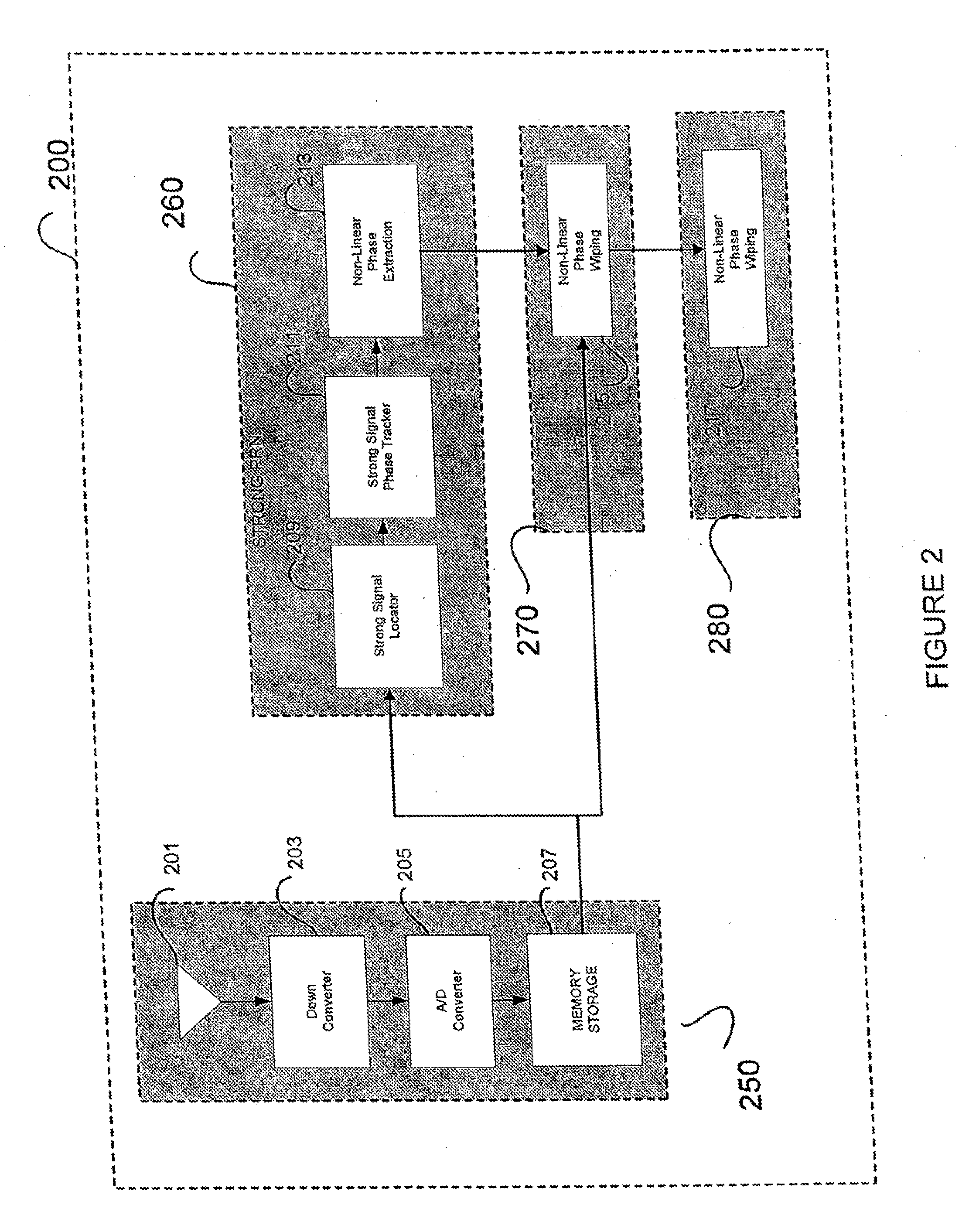Cross-PRN Phase Correction for GPS Processing
a phase correction and gps technology, applied in the field of gps processing, can solve the problems of significant losses, increased processing gain, and reduced so as to increase the processing gain of received gps signals, increase integration time, and increase the sensitivity of gps receivers.
- Summary
- Abstract
- Description
- Claims
- Application Information
AI Technical Summary
Benefits of technology
Problems solved by technology
Method used
Image
Examples
Embodiment Construction
[0002]The invention was made with U.S. Government support under contract no. 2004-H009000-000. The U.S. Government has certain rights in the invention.
BACKGROUND OF THE INVENTION
[0003]1. Field of the Invention
[0004]The present invention relates generally to GPS processing and more particularly to GPS processing of GPS positioning signals in faded environments.
[0005]2. Description of the Related Art
[0006]There is a growing need for accessing GPS positioning signals in faded environments (e.g., indoors, below ground). The fades encountered can be more than 30 dB in some cases. The sensitivity of the GPS receiver must be increased commensurately to operate in these environments. Since high gain antennas cannot normally be used in these faded environments and lowering the noise figure can prove to be very expensive, the processing gain must be increased by increasing the integration time as much as possible. This requires that the phase profile of the near-baseband signal after GPS-mess...
PUM
 Login to View More
Login to View More Abstract
Description
Claims
Application Information
 Login to View More
Login to View More - R&D
- Intellectual Property
- Life Sciences
- Materials
- Tech Scout
- Unparalleled Data Quality
- Higher Quality Content
- 60% Fewer Hallucinations
Browse by: Latest US Patents, China's latest patents, Technical Efficacy Thesaurus, Application Domain, Technology Topic, Popular Technical Reports.
© 2025 PatSnap. All rights reserved.Legal|Privacy policy|Modern Slavery Act Transparency Statement|Sitemap|About US| Contact US: help@patsnap.com



